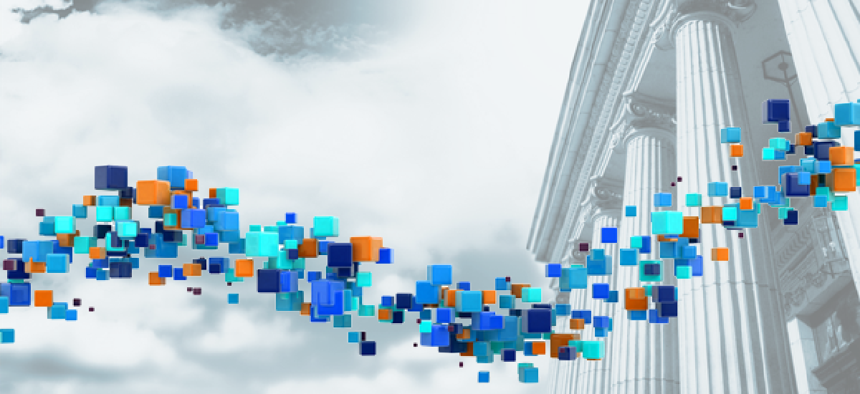Is blockchain right for your agency?

In environments with blockchain-assured trusted data, agencies can layer on powerful tools like microservices and AI to be more effective and unlock new potential.
Blockchain is hot right now. But how can it be harnessed in the federal government?
First, a brief explanation. Blockchain is a distributed digital ledger that can record and verify transactions between two parties. Anything of value -- property, patents, copyrights, etc. -- can be tracked and traded through blockchain. Because it’s a shared ledger, it can be used to record any transaction and track the movement of any asset, which creates enhanced visibility and eliminates the opportunity for malicious parties to alter previous blocks or data transactions.
In short, blockchain offers trust. There is no need for a middleman to manage information or assets, so users can own their own data and decide with whom to share it.
Providing trust and emerging technology foundations
Agencies can use blockchain to bring trust into their ecosystems with data that is immutable, distributed and has provenance. Rather than managing data in a centralized manner, which creates data silos and points of failure or vulnerability, blockchain distributes data among the ecosystem of various parties and agencies.
The data is also encrypted. This encryption works alongside the blockchain’s distributed properties to keep data safer, unlocking its potential to be used as a foundational technology which others -- such as microservices, artificial intelligence or process automation -- can leverage.
Even with all the benefits blockchain can yield, it may not be right for every agency. In cases where IT leaders seek to simply aggregate or analyze datasets, for example, a simple, more cost effective database will suffice.
How to determine if blockchain is right for your agency
Government leaders should explore use cases and start asking questions. First and foremost, they must decide whether their use case is truly aligned with blockchain architecture, or if a traditional database will achieve their goals.
The use cases that best align with blockchain are those where there is a constant stream of shared data and where there is a risk the data could be changed, lost or exposed -- for example, in voting, identity management or supply chain applications. Where traditional databases require investment in ensuring and maintaining data integrity and security, blockchain already features these capabilities.
Identifying use cases
While implementation can be difficult and expensive for government in the beginning, blockchain can solve costlier problems down the road, such as the following:
Data integrity: The Department of Homeland Security’s Customs and Border Protection agency is looking into using blockchain to the secure data collected at U.S. borders. Because the distributed nature of blockchain prevents outsiders from altering transaction history, DHS can secure data collected by internet-connected sensors, cameras and other devices, which will help it identify spoofed devices that have been added to the network to allow illegal goods to come across the border.
Secured supply chain: Because every transaction goes onto the ledger as a block for all nodes in the ecosystem to validate, blockchain can provide instant access to information about the origin of any product. For example, the Navy is responsible for the logistics and shipping of critical mechanical parts needed for aircraft. Using blockchain, Navy officials could track these parts at every touchpoint on the supply chain, ensuring they are safely delivered to their destinations.
Identity authentication: Federal agencies can use blockchain to speed the process for vetting visitors across all agencies without needing to share sensitive data. Each agency would have its own encrypted network with information about its visitors. If a person who has previously been identified in another agency’s system as suspicious tries to enter a different agency, that person will be “flagged,” ensuring government buildings are safe from outside threats.
Ultimately, blockchain has the potential to secure government transactions by creating environments based on trust. If data is trustworthy, agencies can layer on powerful tools like microservices and AI to be more effective and unlock new potential. While blockchain may not the solution for every situation, where there is potential for use cases to work, the benefits greatly outweigh the costs.





